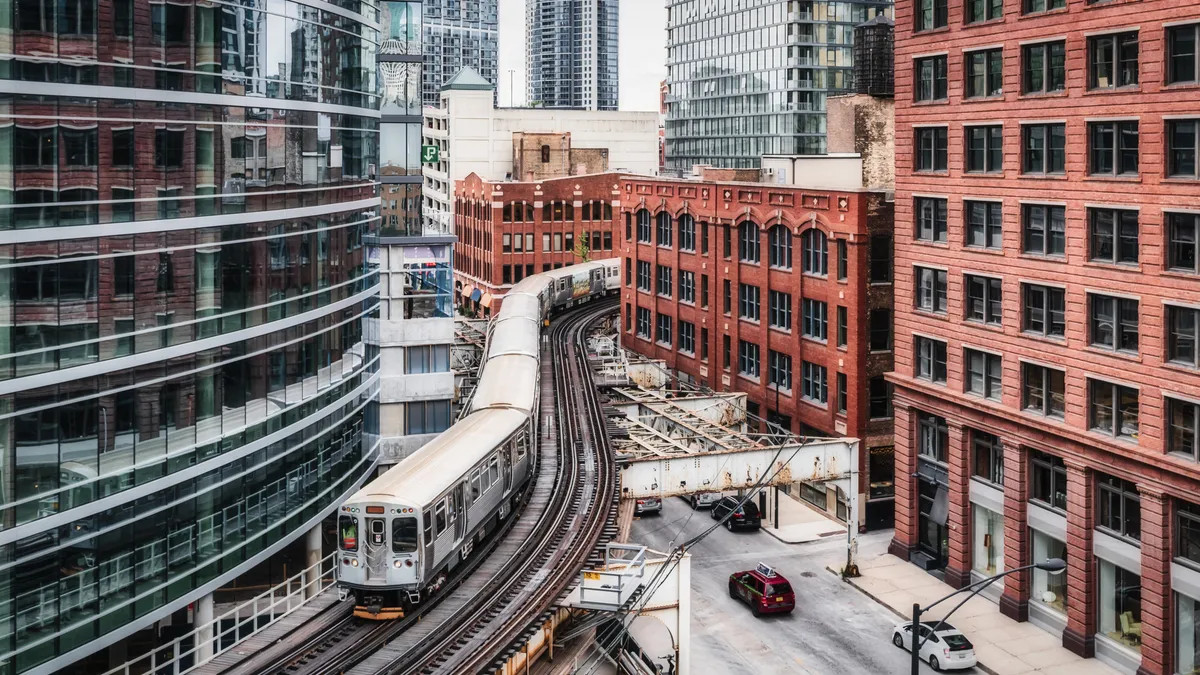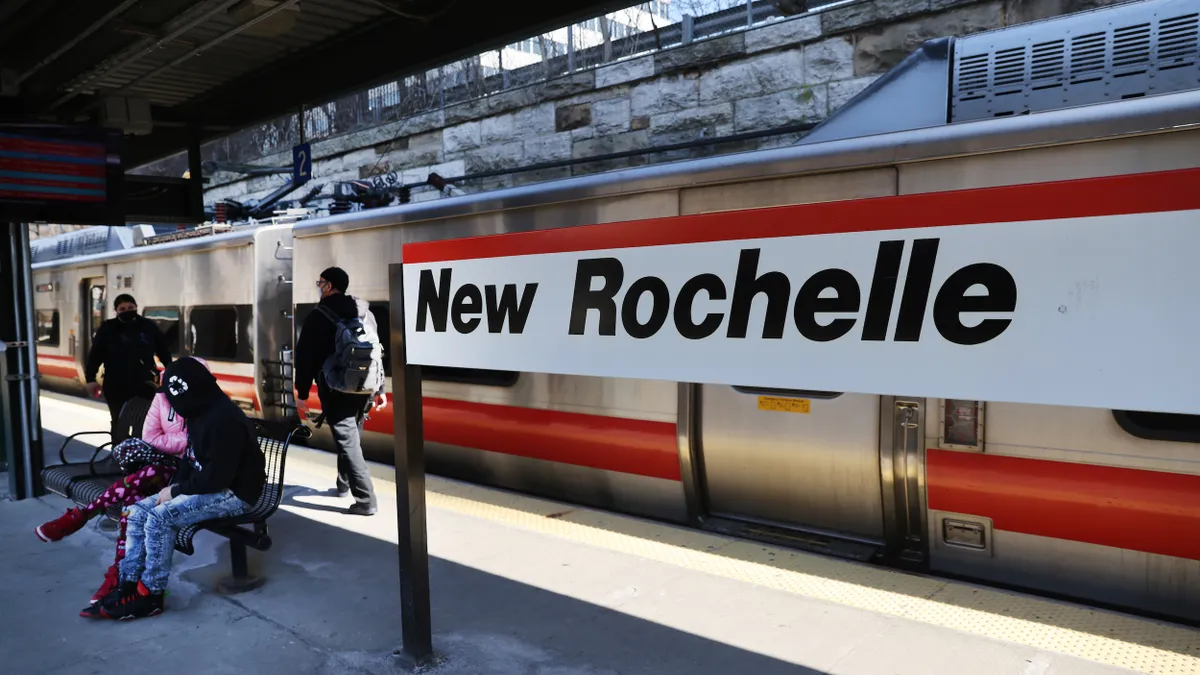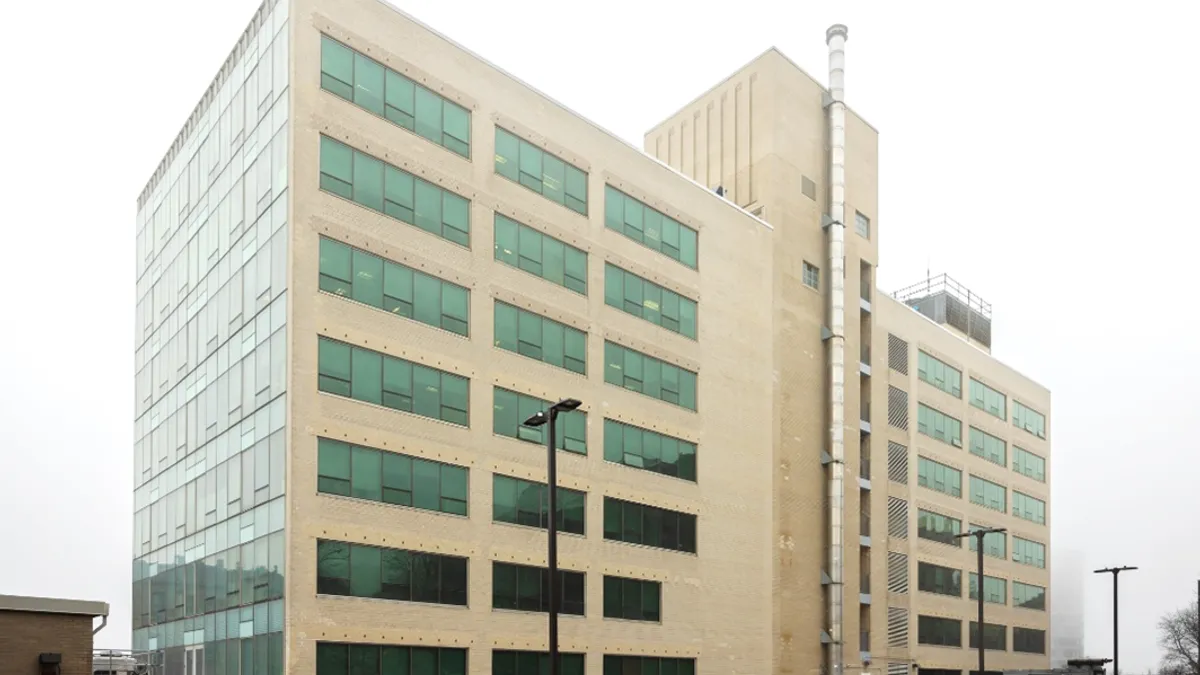Infrastructure builders must shift their thinking as environmental pressures increase and generational needs change, according to the American Society of Civil Engineers’ new President Marsia Geldert-Murphey.
She takes the reins at the country’s oldest engineering trade group amid an upswell in federal infrastructure funding from the Infrastructure Investment and Jobs Act, as well as a time of increased industry interaction with federal officials.
“You need engineers — civil engineers — at the table to help understand how initiatives affect the long-term sustainability, resilience and safety of our communities,” Geldert-Murphey said. “We've got a perfect good storm happening right now where we have funding for infrastructure, and we have an administration and legislators who are listening.”

In addition to her work as licensed engineer and policy wonk, Geldert-Murphey has founded two companies: Belleville, Illinois-based Kaskaskia Engineering Group and St. Louis-headquartered Sequoia Engineering and Environmental. Based in the St. Louis area, she is currently a regional director for Lochmueller Group, a 270-person Midwestern consulting firm, and is responsible for the operations of its Missouri and Illinois offices.
Her background and expertise mean that she’s seen firsthand the impact of the new federal infrastructure funding.
“It took a little bit of time, but I can definitely see that it's rocking and rolling,” Geldert-Murphey said. “At my own company we hired 35 people last year just in our region, and I still need more.”
Here, Geldert-Murphey talks with Construction Dive about drawing underrepresented populations to the building industry, the politics of infrastructure funding and how to build structures that will stand up to extreme weather and serve the next generation.
The following has been edited for brevity and clarity.
CONSTRUCTION DIVE: What are you planning to do in your new role as ASCE president?
MARSIA GELDERT-MURPHEY: One of the things that I’m really excited about doing is getting more people interested in civil engineering, especially women and underrepresented populations, because the fact of the matter is, our needs are greater than the pipeline that we have.
I was a first-generation college student and I didn't even know what a civil engineer was until I was practically selecting [a major] in college. I personally feel the people who live in a lifestyle where you have to have ingenuity — you have to fix things, things aren't fixed for you and you're used to using things until they're on their last leg — make really great engineers.
To this day, I still can repair almost anything that breaks in the house. That's not because I'm an engineer, that's really because of my upbringing. I feel that we are missing a really valuable source of potential engineers out there that just need to know that this profession exists, and that it's a possibility for them to be a part of this.
We also have what we call the silver tsunami: We've got all these members of our profession that are retiring, and they're brilliant, they have a lot of wisdom. They can help mentor this next generation of students and young engineers, so I'm trying to get them more engaged, to stay involved with civil engineering.
How might a change in administration impact infrastructure funding? Do you think infrastructure is becoming more of a bipartisan issue?
It's always hard to take the temperature of what's happening in D.C., because I think what we see is very sensationalized. But I absolutely get the sense that, regardless of your political affiliation, everybody's recognizing the power of infrastructure now.
Of course, we have an administration now that invested in infrastructure. We're very excited, we want to keep that rolling, but do I think that that would end if the administration changes? None of us really can say definitively. I hope not, I really hope not.
Because the thing that you've got to remember — and people who are in the investing world will appreciate this — is that, for an industry to have certainty, to understand that there is going to be consistency and funding available, they will invest, they will grow, they will hire, they will buy new equipment, it's good for everybody. So we've got to maintain this infrastructure funding, it has to be consistent funding, we just have to.
What is our country’s most underfunded infrastructure sector?
Transit and public transportation is always the one that seems to be given the least amount of funding. They actually did receive funding significantly in this last bill, but they have been starved of consistent revenue for so long that it's going to take a while.
I think, truly, this is also a generational thing. A lot of our lawmakers are of an older generation. And the younger generation — I know, I have kids from 22 to 28 — and they use public transportation consistently. They prefer it. So, especially when you have people moving to an urban area and you need to accommodate bikes, pedestrians, public transportation, those are going to be key areas moving forward.
People are moving to the urban areas, because those are where their jobs are, that's where those trade schools and universities are. We need to make sure that this large influx of population can live safely and comfortably, and we can do this efficiently.
Personally, I believe the cities with the best public transportation systems are going to win with this Gen Z generation. They're going to want to go where they can move more freely and not have to worry about a car. So we've really got to shift our thinking and look to the future.
How can we build better infrastructure?
I had two grandfathers who were in the trades. One was a carpenter, one was a plasterer. And I remember they would talk about, “We're doing this for you, this is for you.” They were serious about it, because they knew they were building an infrastructure system that they weren't necessarily going to be able to enjoy for their entire lifetime.
My generation, likewise, we need to do that for the next generation. The next 50 years, the next 100 years — what are we putting in place now that is going to serve them? When you think about it, we had a horrible year last year. There was an unprecedented number of billion-dollar environmental disasters — there were 28 — and our infrastructure built back in the day was not designed to survive under these circumstances.
We know these circumstances exist. And so we need to design moving forward with resilience, meaning it can withstand the climate change effects that we're feeling now, and also accommodate the changing needs of this up-and-coming generation.
Last year ASCE released a first-of-its-kind guide on how to develop and implement sustainable solutions throughout a project’s entire life cycle. What must be done to build more sustainably and resiliently?
In a marching band, you’re all playing your individual instruments, but your movements are synchronized and you’re playing off of the same sheet of music. We have to do the same with our codes and standards. If everyone is adopting the most up-to-date codes in a consistent and synchronized manner, then that is going to allow material producers, suppliers, contractors all to be able to anticipate and understand what is needed.
We have got to have an unambiguous way, that is date- and time-stamped, that says “this is the minimum requirement for this process, or this design.” If we can just do that it would be so powerful, and the effects would be so profound.
People are used to doing LEED certification for buildings. So they can have a LEED-Platinum building that’s sustainable, resilient, etc., but it's like a balloon sitting out in the prairie. It doesn't do anything, add or subtract anything to the surrounding area that it's in. We've got to start looking at things more holistically, we've got to look at what is happening outside of the walls of that building, and do the same when it comes to our transportation infrastructure.
We also need to look at construction methods, for example materials that can withstand some of the high-wind loads. Flooding is a big issue and we've got to redesign how we’re addressing that, and look at how we're going to protect our neighborhoods and our communities when we're having these severe weather events more frequently. We’ve got to go from the “me, me, me” to the “we, we, we,” and consider what is best for all of us.





















